Flexible pricing options for multiple instances
Atlassian offers a range of enterprise plans for its apps, including Jira, Jira Service Management, and Confluence, crafted to empower large organizations to scale with confidence and efficiency. To complement these robust offerings, the Atlassian Marketplace is introducing a new level of flexibility in app billing and licensing. This will enable Enterprise plan customers to be charged based on the number of unique users of the Marketplace app across multiple instances, regardless of the number of Atlassian app instances. Partners will be able to set multi-instance pricing for Marketplace apps from February 2025 and it will be made available to customers in Q4 CY 2025.
Benefits
This multi-instance licensing option will give you the tools to better serve enterprise customers, optimize pricing strategies, and enhance customer relationships.
Major benefits include:
Pricing flexibility: Partners can set different prices for plans with multi-instance compared to those plans with a single instance. This flexibility allows partners to tailor their pricing strategies to better meet the needs of enterprise customers.
Increased sales opportunities: This option allows partners to cater to enterprise customers who require Marketplace apps across multiple instances. This can lead to increased sales, as customers are more likely to purchase Marketplace apps that can be used across all instances.
Operational efficiency: Partners can manage customer licenses for multiple instances together, allowing for efficient updates and management of pricing strategies.
Enhanced customer satisfaction: This option addresses customer dissatisfaction related to paying for the same app multiple times across different instances. By providing a more streamlined and cost-effective setting, partners can improve customer satisfaction and loyalty.
How does multi-instance pricing work?
Multi-instance pricing will be enabled for all Jira and Confluence apps by default. The default price for a multi-instance for a tier will be the same as the price for a single instance for the tier. Customers will be charged for the number of unique users across instances with apps installed, and they don’t have to pay twice for the same apps and users across multiple instances.
Whenever new users are added to a site, a single invoice will be generated instead of a new quote for apps. However, the invoice will detail the multi-instance pricing for apps separately at the time of renewal, purchase, or upgrade. This flexibility, which is aimed only at Cloud Enterprise Edition (CEE) customers, will also give them access to volume discounts at the Enterprise level.
| Before |
|---|
 |
| After |
|---|
 |
How can I set pricing for multiple instances?
We have provided two options to set pricing for multiple instances, which will be open to partners from February 2025. You can either enter the pricing details directly on the UI or upload a CSV file in the mentioned format to update the pricing. You can find the detailed steps below:
-
Log into Marketplace with your partner account and go to the Pricing tab of the desired app.
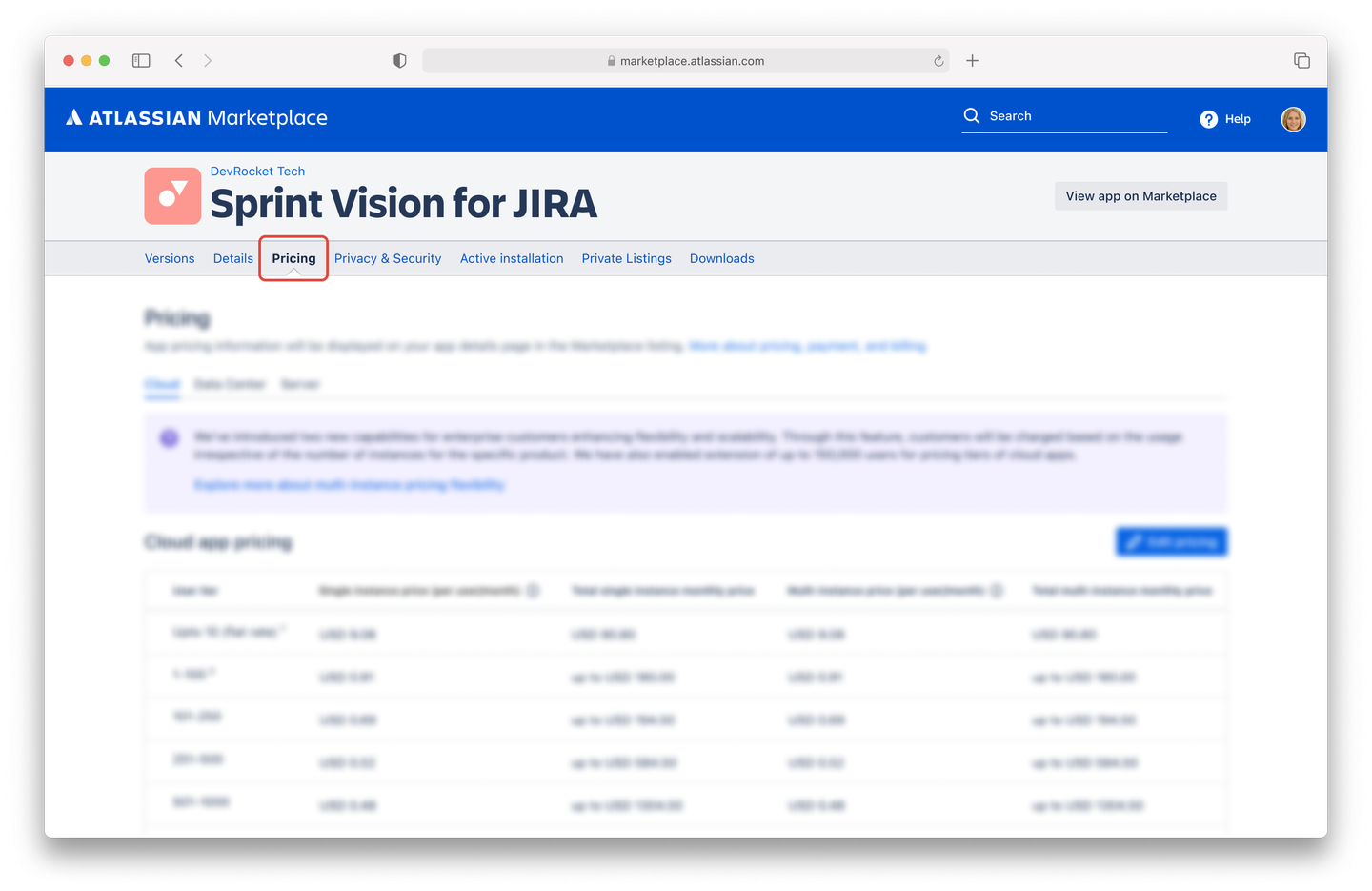
-
Select Edit pricing to set the multi-instance pricing for your app. We've included an additional column dedicated to multi-instance pricing in the table.
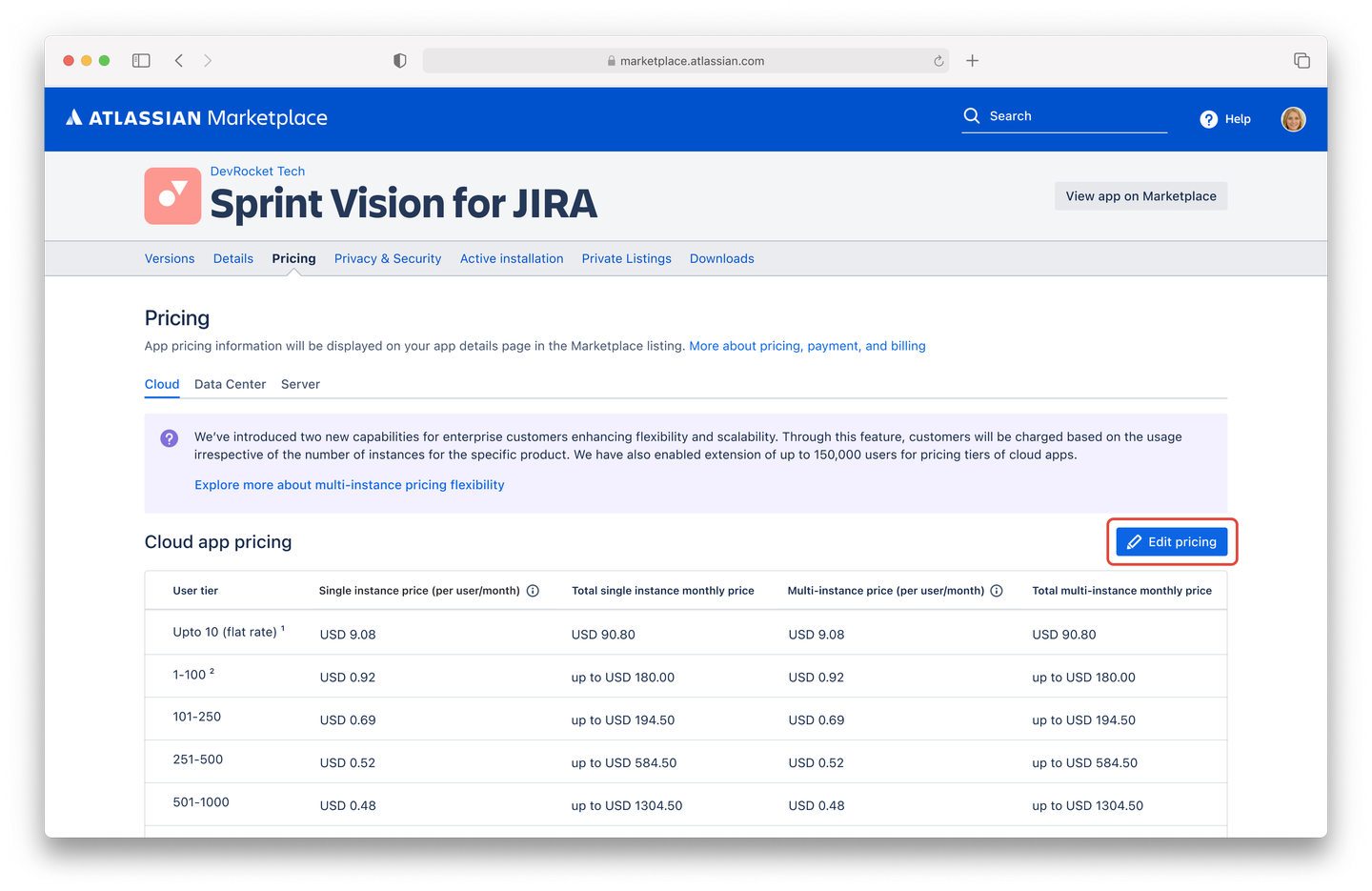
-
Select from the listed options to populate the single instance pricing as a percentage of parent Atlassian app pricing. You can also set your own percentage pricing by selecting custom pricing.
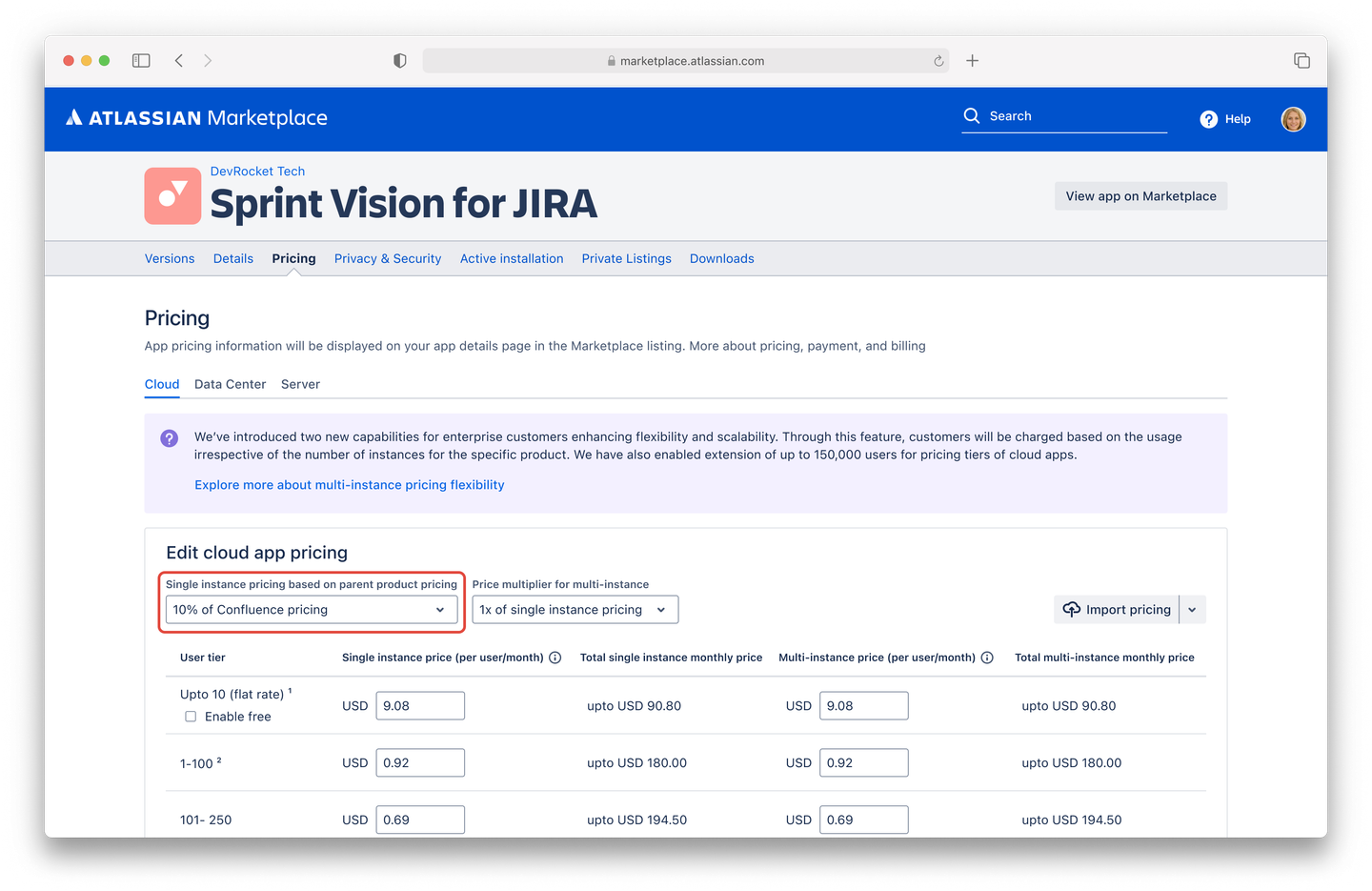
-
You can set the pricing for the new multi-instance pricing column as a price multiplier of the pricing for a single instance. It can be greater than or equal to 1x of single instance pricing. All the fields below are editable, and you can also edit the pricing at different user tiers.
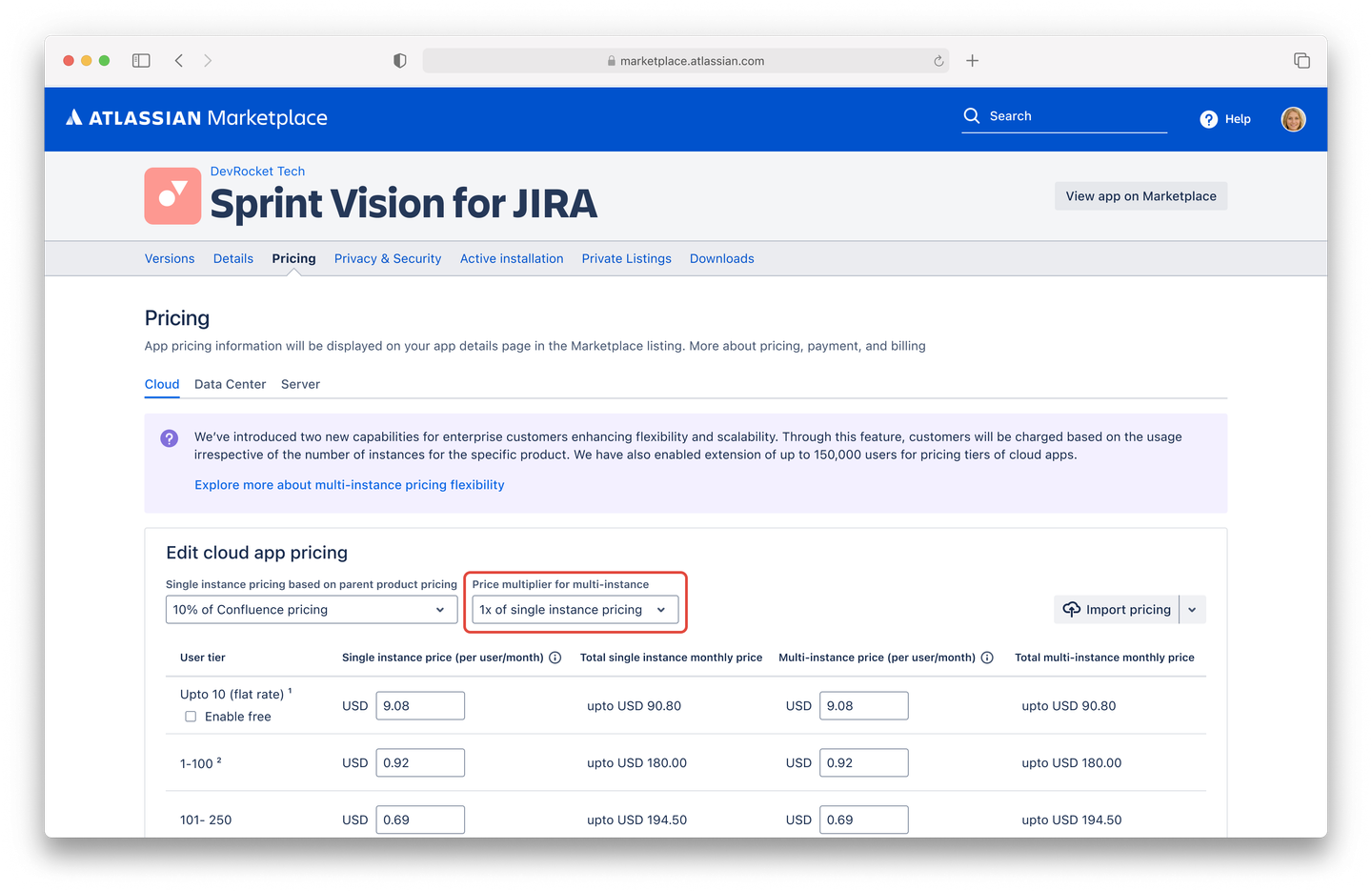
-
If you wish to upload a CSV file instead of entering the pricing details for both single and multi-instance pricing, you can select Import pricing. We have also added an option to Download our template in the drop down menu, which can be used to add the pricing details. You can opt for the template to ease the content validation process.
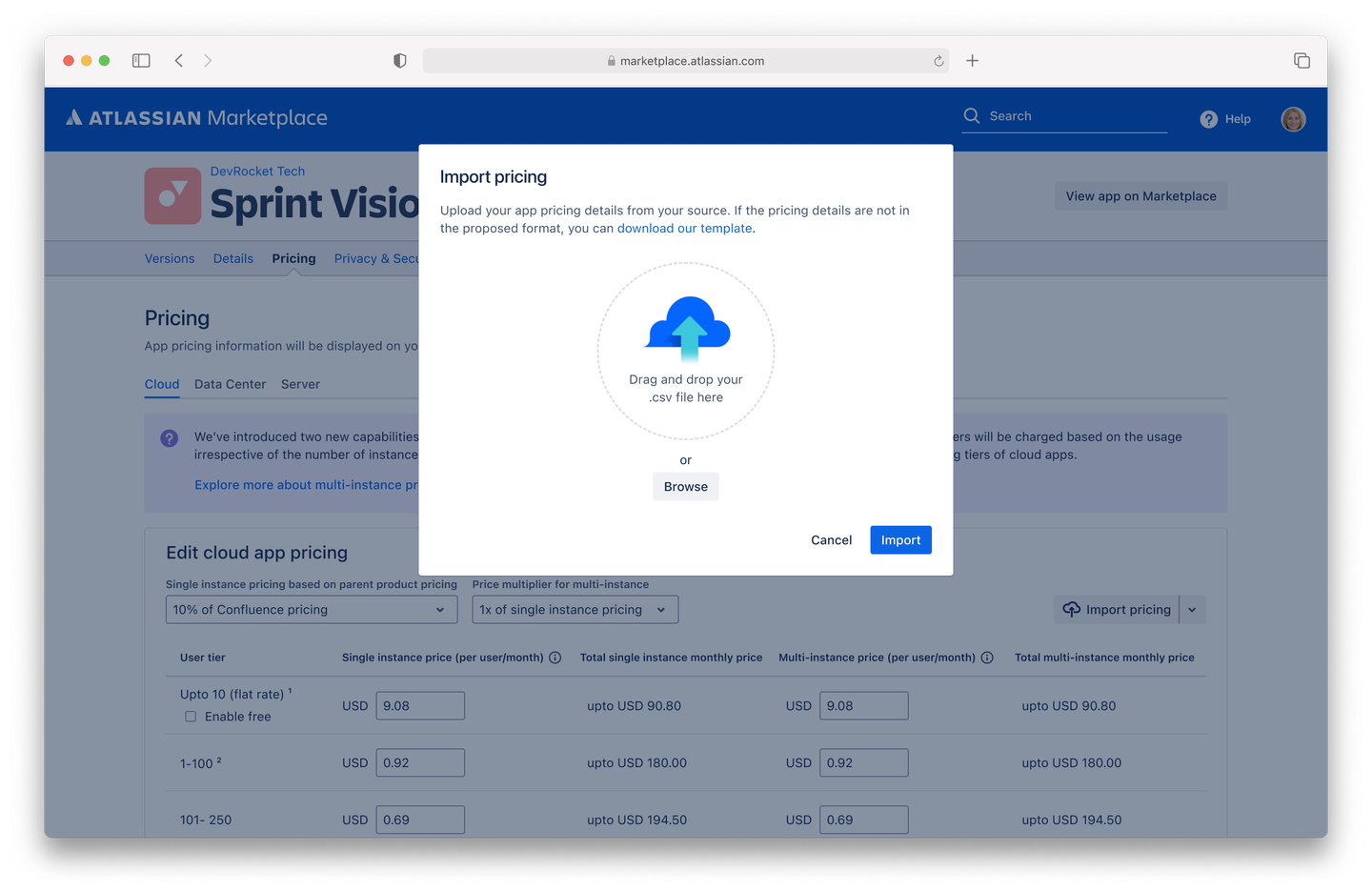
-
Once the validations are done, select Save cloud pricing to submit. You will receive a message confirming the status.
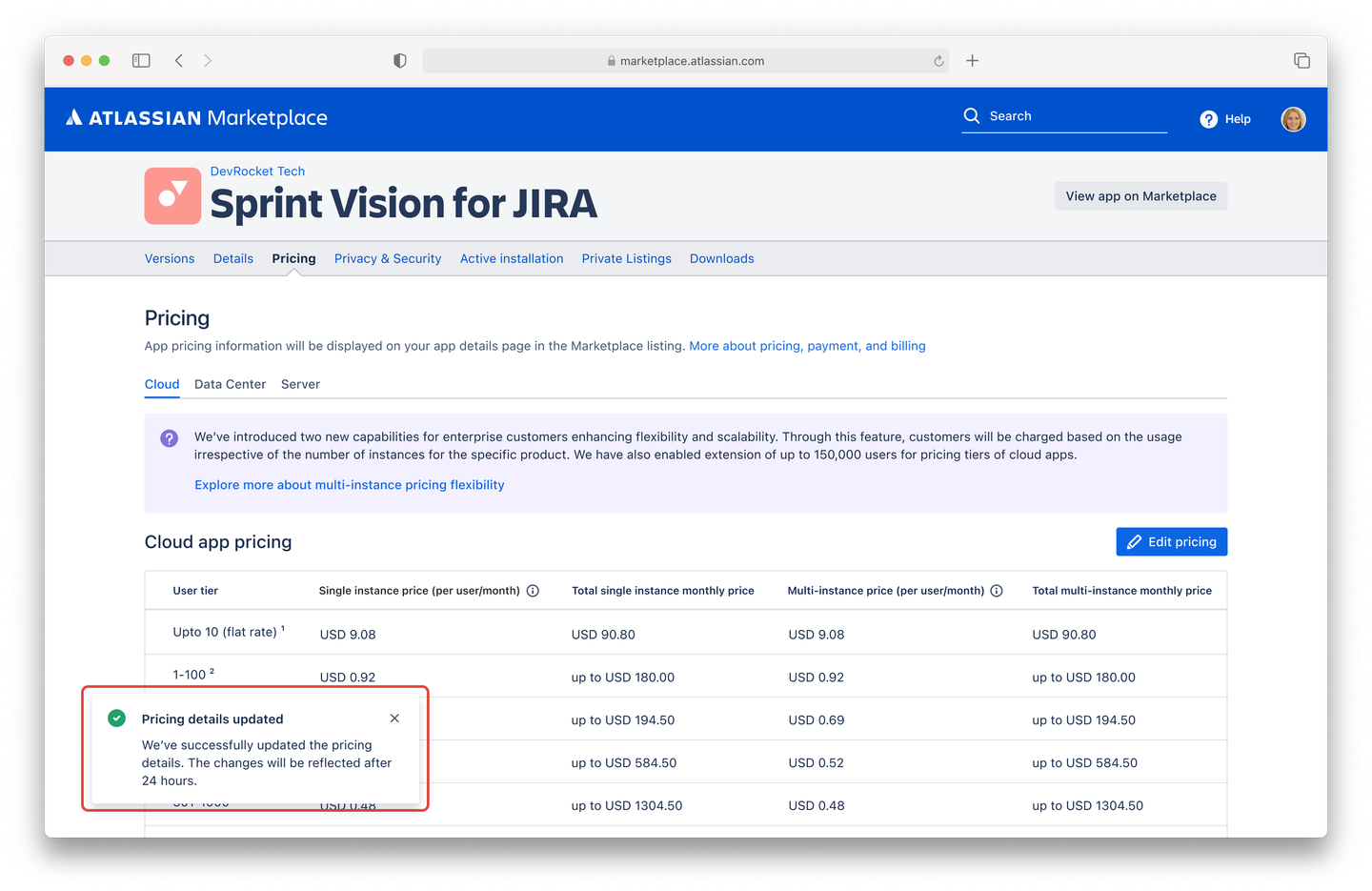
Things to note:
-
Multi-instance pricing for a user tier should be greater than or equal to the price for a single instance for the same user tier.
-
Changes can be made only via the UI. No APIs are available to set the Multi-instance pricing.
-
Multi-instance pricing is only available for Jira and Confluence apps.
-
Pricing change becomes active and will reflect on the Marketplace site in 24 hours. Following this, new customers will pay updated prices. More about pricing and billing
-
Partners will set the price monthly, but customers are billed annually for multi-instance pricing.
Frequently asked questions
When can partners set the multi-instance pricing?
Partners can set multi-instance pricing for their apps from February 2025.
What will happen to existing app pricing if partners don’t set multi-instance pricing?
All existing apps will be enabled with multi-instance pricing by default, which will be set the same as single-instance pricing.
How can customers get access to multi-instance pricing?
Customers can reach out to Advocates from the app listing page to learn more about multi-instance pricing, starting from May 2025.
When will this information be visible in reports?
This information will be visible in reports with Customer GA, tentatively scheduled for May 2025. After the partner release in February 2025, a detailed announcement on what changes will be visible in reporting will be shared with partners.
What will happen to those apps that have editions enabled as part of the EAP program?
If editions are enabled, the multi-instance pricing for the Standard edition of an app should be greater than or equal to the pricing set for the single instance of the Standard edition per user tier. Similarly, the pricing for multi-instance for the Advanced edition of an app should be greater than or equal to the pricing set for the single instance of the Advanced edition per user tier. Also multi-instance pricing for the Advanced edition should be greater than multi-instance pricing for the Standard edition.
Rate this page: